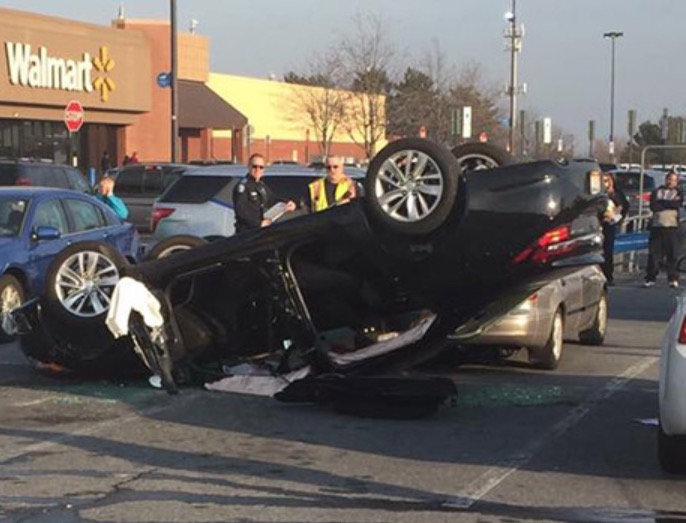Picture this: you’re maneuvering through a crowded parking lot, expertly dodging shopping carts while keeping an eye out for that elusive parking spot. Suddenly, with an awkward clunk, you find yourself involved in a minor fender bender. It’s a scenario many of us dread, yet it raises an intriguing question: are parking lot accidents considered no-fault? To unravel this conundrum, we must delve into the intricate world of automotive insurance, liability, and the nuances that differentiate a minor mishap from what could spiral into a legal quagmire.
First, let’s clarify what a fender bender is. This term typically refers to minor vehicle collisions resulting in minimal damage and often no injuries. Commonly occurring in parking lots, these incidents usually involve small scrapes or dents rather than catastrophic collisions. However, the implications of such seemingly trivial accidents can be more complex than one might assume. In insurance parlance, the context of the accident plays a crucial role in determining fault.
In many states, the legal framework surrounding automobile accidents categorizes them into fault-based and no-fault systems. In a fault-based system, the party responsible for causing the accident is held liable for damages, both to their vehicle and to others involved. Conversely, in a no-fault state, each party’s insurance covers their own damages regardless of who was to blame. Now, this distinction raises a fundamental point: does the setting of the accident alter its categorization?
Parking lots, often perceived as private property, complicate the equation. While public roads have clear regulations governing traffic laws and fault determination, parking lots operate under different circumstances. They are typically governed by the rules set forth by the property owner, which can lead to variable interpretations of fault. For instance, was the driver reversing without checking their surroundings, or did another driver fail to yield when exiting a parking space? The answer could sway liability claims significantly.
Moreover, parking lots frequently lack well-defined traffic patterns and signage, further muddying the waters of fault determination. For example, if an accident occurs near the entrance where many drivers are jockeying for position, the cause might be attributed to poor decision-making by both parties. In such cases, insurance companies often take a closer look at the evidence presented, insisting on identifying who made the first misstep.
That being said, let’s explore the prevalence of no-fault insurance in various states. In jurisdictions with no-fault laws, the initiatory step after an accident is generally to submit a claim to one’s own insurance provider. The ensuing reactions can be somewhat mechanistic, leading to an often frustrating process. Claimants in a no-fault state may feel a sense of relief at resolving their damages without contesting fault. Yet, it stirs a lingering challenge: if you’re primarily responsible for compensating your own costs, how do you handle disputes over incurred costs that exceed policy limits?
An additional layer exists when considering the nature of minor accidents. Injuries, even minor ones, can lead to complex claims and may affect the perceived culpability of the parties involved. In a parking lot scenario, a pedestrian injured by a backing-up vehicle might complicate the situation further, altering the perceived dynamics of fault. Both drivers and pedestrians are subject to different legal protections, and it can become challenging to assess a straightforward conclusion regarding fault.
So, how do insurers navigate these encumbering waters? In parking lot accidents, many insurance companies lean on evidence such as police reports, eyewitness statements, and even photo documentation. In this era of smartphones, taking a quick snapshot of the scene can bolster a claim significantly. However, it’s crucial to tread carefully—unfortunate misrepresentations can lead to complications that, far from facilitating a simple resolution, could result in legal disputes.
Ultimately, confronting the aftermath of a fender bender—no matter how seemingly minor—requires a combination of prudence and informed action. The question of liability can be a game of chess. The layout of the parking lot, the timing of actions, and the available evidence can all contribute to the outcome of a claim. Each accident is unique, intricately woven into the tapestry of human behavior and decision-making.
Now, let’s ponder a hypothetical scenario: you’re backing out of a space and—whoops!—a car nudges your bumper as it speeds forward, colliding into yours. This unexpected clash sends ripples of disbelief and frustration through your thoughts. Do you get their insurance information? Call the police? Is this all your fault, or does the other driver share some responsibility? The warren of decisions laid before you serves to highlight a vital truth: the complexity of auto accidents in general often leads to unforeseen challenges in insurance claims, especially in parking lots.
In conclusion, while many minor parking lot accidents may seem straightforward, the dynamics of liability can often cloud judgment and complicate claims. Distinguishing between fault-based and no-fault insurance systems adds a layer of complexity for anyone who finds themselves on the wrong end of a fender bender. Awareness and preparedness can prove invaluable: understanding local laws, documenting incidents thoroughly, and knowing how to navigate insurance claims become essential tools for any driver. In the wake of a fender bender, it’s essential to remain vigilant yet tranquil, recognizing that what may seem like an inconsequential incident can ripple into broader implications in the realm of automotive insurance.
